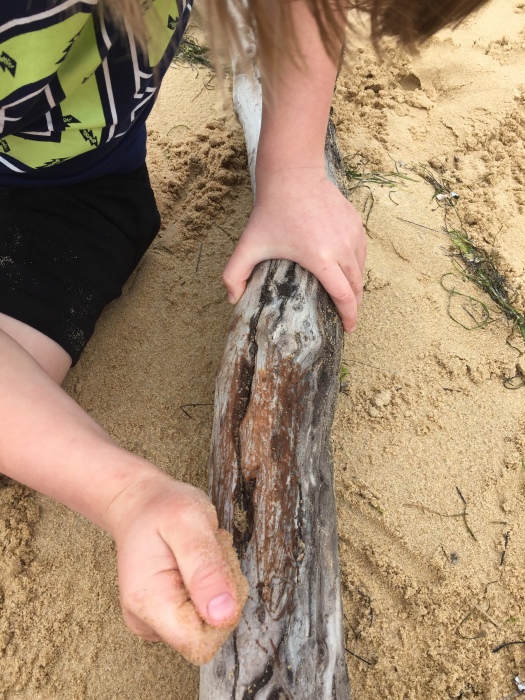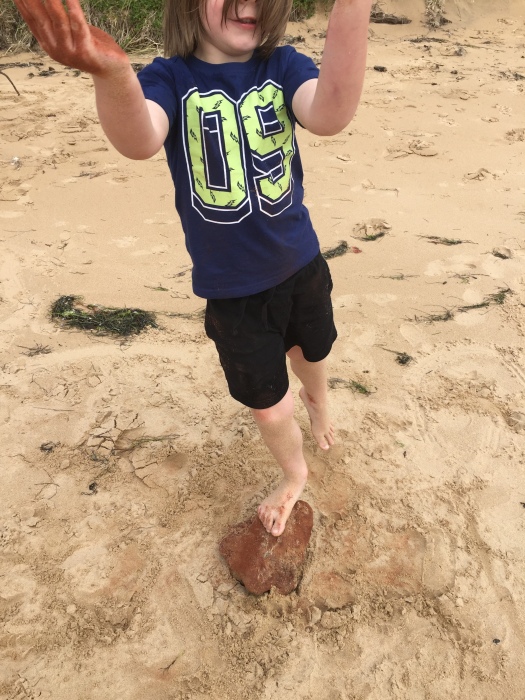When I pick up my boys from school I am not one of those parents who stands around in groups talking to other parents. No, I like to lurk inconspicuously of course around spaces that are loved by children. I cannot walk into a space without looking around for residue of play. Markings, buildings, collections, things that children have gathered, set up and used. If we look close enough the environment gives up it’s secret.
My lurking isn’t about interrupting or asking questions, it’s about standing around looking busy doing something else, anything else other than looking. Yet I am listening intently while looking at my phone or staring into the distance. My ears are pricked up alert for snippets of information and divulging of secrets.
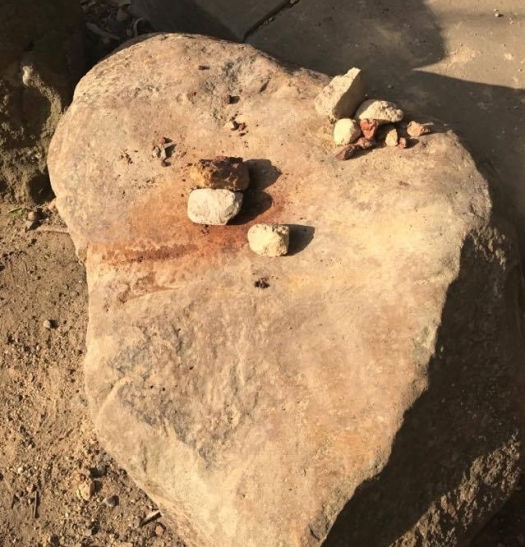
This story starts with me coming across a gathering of small rocks which had been placed together on a larger rock. There were markings on the rock indicating that the smaller ones had been rubbed against the surface which had left marks. Accompanying this were particles of rock. There are two things that immediately excite me about this.
The first thing is this is obviously somewhere children have been and engaged with. Secondly, this mark making is an ancient form of communication. Is it too big a step to suggest that this non verbal communication is a way that children indicate to each other that something is happening. The rocks have provided an environmental play cue to the children which they have returned…but these markings possibly provide a cue to other children. It’s like a secret language that adults aren’t privy too.
As I was having a squizz, children arrived. Four to five children appeared in the space but separately, not together. Two of them dug out empty chip packets and proceeded to carry water from the bubblers to one of the rocks. Arriving at the rock they poured the water onto a small divet and proceeded to use sticks to mix the rock particles together.
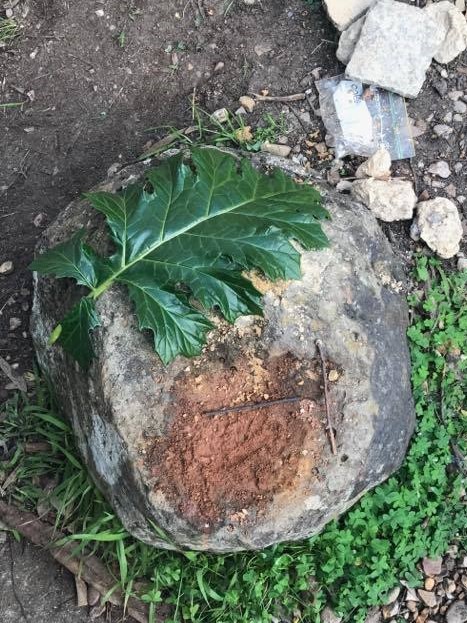
Two other children were further up crushing rocks and another collecting and transporting rocks. There were three separate play frames occurring that transformed and changed as time passed. It was a delight to listen and ‘watch’ this small snippet into a world I have long left behind.
And then I heard…”who want’s a tattoo?”
Flynn: “my mum has tattoos…she would want one”
So over they came to me and asked if I wanted one. “Sure would”. Three children kind of circled in and quietly ushered me over to one of the rocks. “We are giving people tattoos, what would you like?” I was obviously taking way too long to think about my answer because before I could get it out Flynn was standing in front of me with a stick. This stick contained the contents of the crushed mixture. One of the children explained this how I got my tattoo and then it would dry on my skin.
” When children pretend, they’re using their imaginations to move beyond the bounds of reality. A stick can be a magic wand. A sock can be a puppet. A small child can be a superhero”. Fred Rogers 1928–2003
As I was being tattooed it was explained to me that the rocks had to be found and then crushed. I was shown, with reverence, two types of crushed rock, a larger pile with a smaller pile next to it: “this is precious this one, it’s hard to find”. I wonder where they are collecting these rocks from as the school yard is big. I love that the time was taken to source different types of rocks: even the ‘precious’ ones.
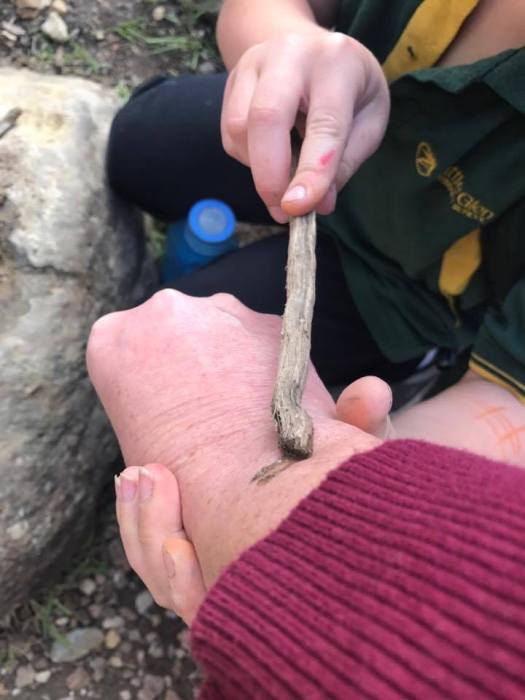
Once the tattoo had been finished and whilst still wet, one of the children came over with the dust. This was sprinkled on and then blown away gently by another child who had proclaimed that she was “really good at blowing the dust away”.
Even though I had been invited and some of them had shared the secrets of the Tattoo Shop I didn’t ask much whilst I was in the children’s space . I am always mindful of adulterating play. I ended up having more than one tattoo that day and some of the children showed me the ones they had either done themselves or by someone else. It got to the point where I could feel my presence in their space so I quietly, without saying anything, stepped to the edge of the play frame.
The edge is where adults need to exist.

